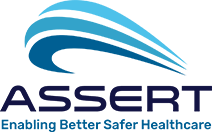ASSERT Micro Credit Modules
About
Our Fundamental Module series will provide a solid understanding of Human Anatomy, Radiological Imaging and Surgical Instrumentation essential for biomedical engineers. Both the Fundamentals of Human Structure and Fundamentals of Neuroanatomy launched in May 2023 with 40 engineers enrolled.
Theory and Techniques modules will allow engineers study the principles of surgery in their chosen specialty and participate in simulated surgeries on fresh frozen cadaveric tissue, led by leading surgeons, alongside surgical trainees, gaining valuable insights into the challenges faced by surgeons and the dynamic nature of the operating room in the Surgical Skills lab. Observerships will be offered on surgical training courses to Medtech staff that wish to increase their surgical knowledge without committing to full modules.
AN6009 – RADIOLOGICAL IMAGING
This module is crafted to equip students with advanced understanding and specialised expertise in the realm of radiology, with a specific emphasis on the interpretation of medical images across various modalities.
AN6020 – FUNDAMENTALS OF HUMAN STRUCTURE
AN6020_Fundamentals of Human Structure
This module will provide learners with an introduction to anatomical terminology and to the structural biology of the major body systems in the context of medical device design and development.
AN6021 – FUNDAMENTALS OF HUMAN MOTION
AN6021_Fundamentals of Human Motion
This module will cover the biomechanics of the musculoskeletal system; articular surface geometry, muscle force orientation and mechanical ligamentous constraints. The main emphasis is on living, functional anatomy in the normal anatomical state and the changes due to injury, age or disease.
AN6022 – FUNDAMENTALS OF NEUROANATOMY
AN6022_Fundamentals of Neuroanatomy
This module will detail the structural anatomy of the human nervous system. Areas of significance in this regard include: the structural biology of the skull, meninges, brain, spinal cord and vertebral column, neurovasculature structures. The main emphasis will be on identifying these neuroanatomical features as viewed through surgical windows.
CONTACT: MICHAEL CRONIN
EMAIL: michaelcronin@ucc.ie
Accreditation
Micro Credential Awarded: 5


